Managing call center operations is no easy task.
With increasing workloads, they face workforce management challenges such as staffing, agent scheduling, and falling agent engagement. These issues can affect their ability to provide good customer support.
Fortunately, call center workforce optimization software can help you streamline your customer support efforts by maximizing your call center agents’ skill sets and availability.
In this article, we’ll explore the key features, pricing, and user ratings of the top ten software solutions you can use today. We’ll also discuss what features to look for in a call center workforce optimization software and two things you should consider before choosing your tool.
This article contains:
(Click on the links below to jump to a specific section)
- Top 10 Call Center Workforce Optimization Software
- Call Center Workforce Optimization Software Basics
Let’s get started.
Top 10 call center workforce optimization software
Here are the top ten call center workforce optimization tools available today:
Note: If you’re interested in first understanding what a workforce optimization tool is and its key features, you can skip ahead to this section.
1. NICE CXone
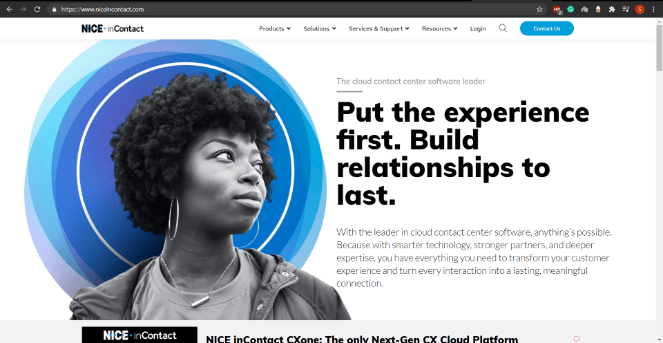
NICE CXone (formerly NICE inContact) is a cloud-based call center workforce management software. It can help a call center maximize workforce engagement and improve the quality of customer interaction.
The software solution offers robust workforce optimization capabilities, such as e-learning, payroll management, hiring, and workforce management.
Key features
- Use Artificial Intelligence (AI) to estimate future employee schedules accurately.
- Provide call center agents with a flexible WFM solution (Workforce Management solution) through the mobile workforce optimization features.
- Develop a WFM strategy consisting of automated intraday management tools and employee reports.
- Use the intuitive interface of this WFM tool to manage forecasts and agent schedules.
- Use workflow automation to identify workforce gaps, determine which agents can fill them, and automatically update your call center operation schedules.
Pricing
Pricing is available on request.
Customer ratings
- G2: 4.3/5 (1,200+ reviews)
- Capterra: 4.2/5 (500+ reviews)
2. Talkdesk
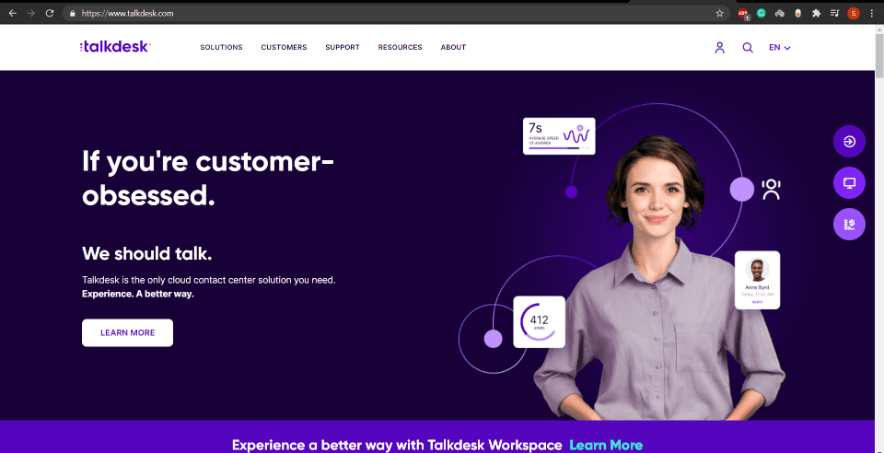
Talkdesk is a leading browser-based call center and contact center workforce optimization software with call routing and workforce optimization capabilities.
Over 1,800 companies worldwide, including IBM, Acxiom, Trivago, and Fujitsu, use this workforce management software.
Key features
- Anticipate customer demand and plan effective employee schedules with omnichannel forecasts based on both real-time and historical data.
- Use this WFO software to compare actual agent behavior with daily scheduled activities and get productivity insights.
- Improve agent satisfaction with a mobile-optimized WFM strategy and a unique chatbot to process change requests for employee schedules.
- Create customizable dashboards to compare key metrics and visualize employee performance trends.
- Import your call center data to Talkdesk’s workforce management system and create customized customer support objectives and guidelines.
Pricing
Pricing is available on request.
Customer ratings
- G2: 4.4/5 (1,400+ reviews)
- Capterra: 4.5/5 (600+ reviews)
3. Genesys Multicloud CX
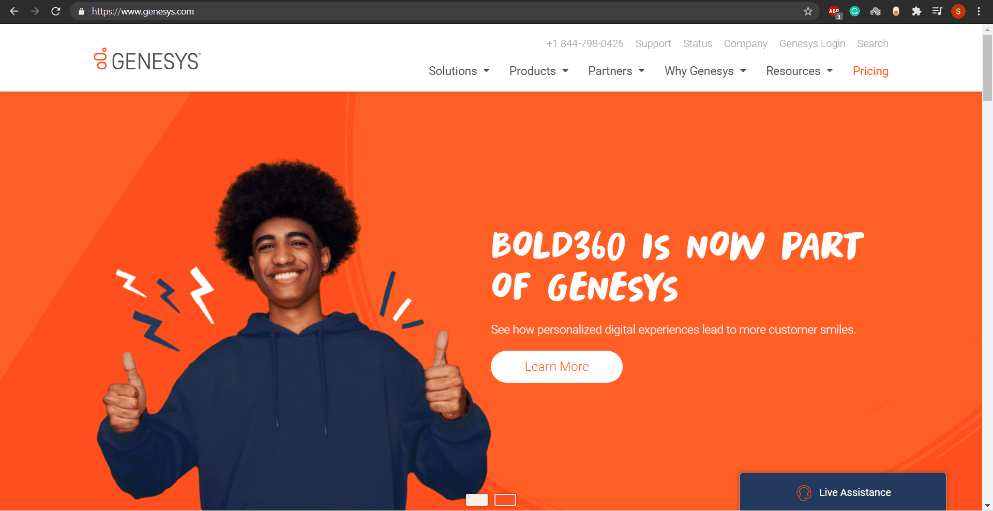
Genesys Multicloud CX is a call center WFO software that gives call centers access to accurate AI-based forecasts and employee schedules. Leading large-scale businesses, such as Vodafone, Whirlpool, PayPal, etc., use this workforce optimization software.
Key features
- Use historical data to decide a suitable staffing level and make agent scheduling decisions based on inbound call volume.
- Integrate your Customer Relationship Management (CRM) platform with the planning and forecasting features of this WFM tool.
- Improve employee engagement and productivity through gamified scorecards and leaderboards.
- Draw cost vs. employee performance comparisons with the what-if analysis feature.
- Develop efficient schedules for overtime, vacation, and training based on week-over-week agent performance data.
Pricing
Pricing plans for this software start at $75/user per month.
Customer ratings
- G2: 4.3/5 (400+ reviews)
- Capterra: 4.2/5 (100+ reviews)
4. Playvox
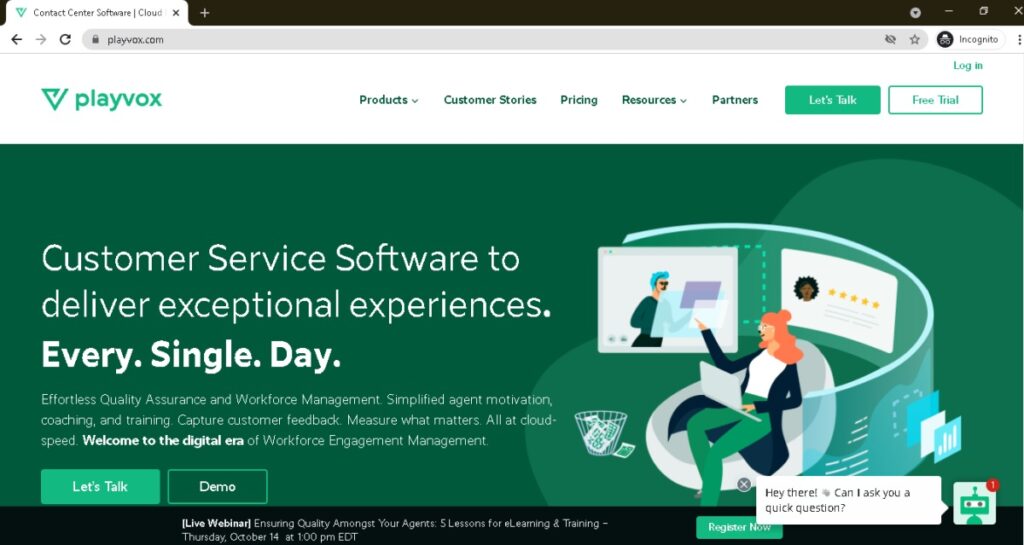
Playvox is a call center software that equips call centers with comprehensive and insightful workforce management and optimization suite.
Its features help with the quality assurance needed for modern customer service, performance management, and improving agent satisfaction.
Key features
- Create a simple and interactive dashboard to track the KPIs (Key Performance Indicators) you need for assessing agent performance.
- Set predefined rules for employee schedules to ensure accountability while using the ‘shift swaps’ feature.
- Empower agents to improve customer experience across digital service channels, such as chat, email, and social media.
- Use the public API (Application Programming Interface) to share key call center data like payroll information, customer interaction analytics, etc., with other analytics platforms such as Looker, Tableau, etc.
- Improve agent satisfaction with digital badges and share their accomplishments on a virtual community wall.
Pricing
Pricing is available on request.
Customer ratings
- G2: 4.8/5 (500+ reviews)
- Capterra: 4.8/5 (70+ reviews)
5. Alvaria
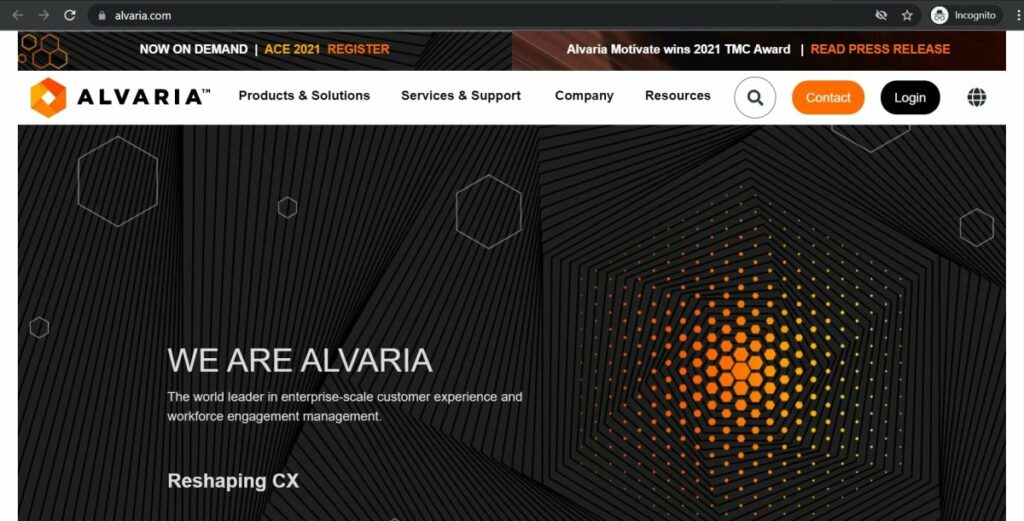
Alvaria is a cloud-based call center and contact center workforce management solution. It allows you to adopt both Customer Experience (CX) and Workforce Engagement Management (WEM) features.
You can start with one or more applications and then add more with ease when you need additional capabilities.
Key features
- Automate call center workflows, like requesting, reviewing, and automatically approving changes in agent schedules.
- Access key information, schedule timely updates and send real-time notifications to agents on a unified communication platform.
- Create business models for chat, email, social media, and other text-based customer communication.
- Use automated seat planning tools that offer seat generation plans for front and back-office personnel.
- Access key agent performance analytics through interactive dashboards.
Pricing
Pricing is available on request.
Customer ratings
- G2: 4.1/5 (200+ reviews)
- Capterra: 4.2/5 (200+ reviews)
6. 8×8 Contact Center
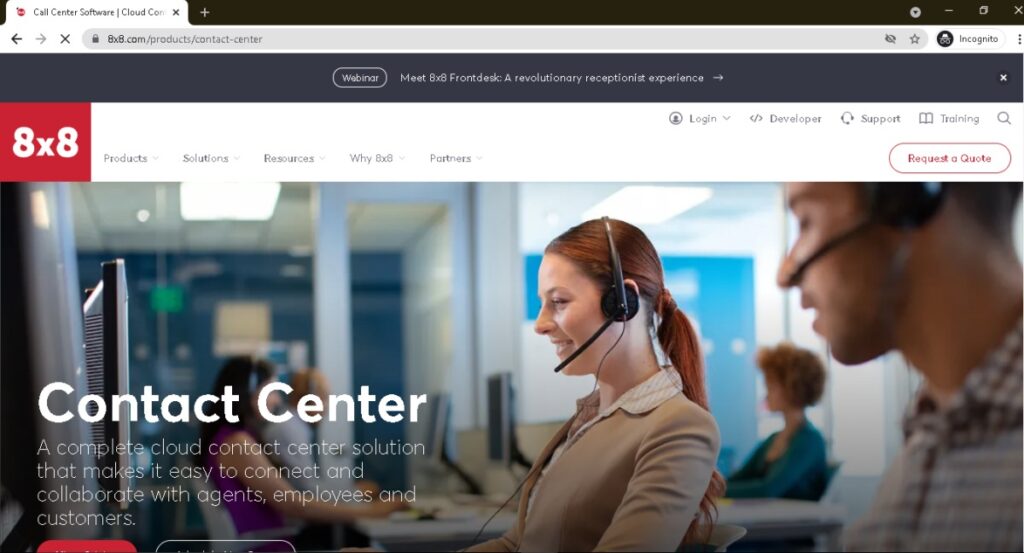
8×8 Contact Center is a self-service cloud call center and contact center workforce optimization software that efficiently improves workforce management. It’s a suitable WFM solution for a call center with agents that work remotely.
The software helps maximize agent productivity through intelligent call routing that matches an agent’s skill to a customer query.
Key features
- Create your agent schedules based on criteria that are important to your business.
- Track agent productivity and check if they’re following their schedules through automated alerts and dashboards.
- Onboard new users to your call center with ease using the tool’s intuitive user interface.
- Use omnichannel call routing solutions, including an Automatic Call Distributor (ACD), Interactive Voice Response (IVR), and a predictive dialer to manage large call volumes and enhance customer support.
- Use speech analytics to get actionable insights into every customer interaction.
Pricing
Paid plans start at $125/user per month.
Customer ratings
- G2: 4/5 (100+ reviews)
- Capterra: 4/5 (20 reviews)
7. Five9
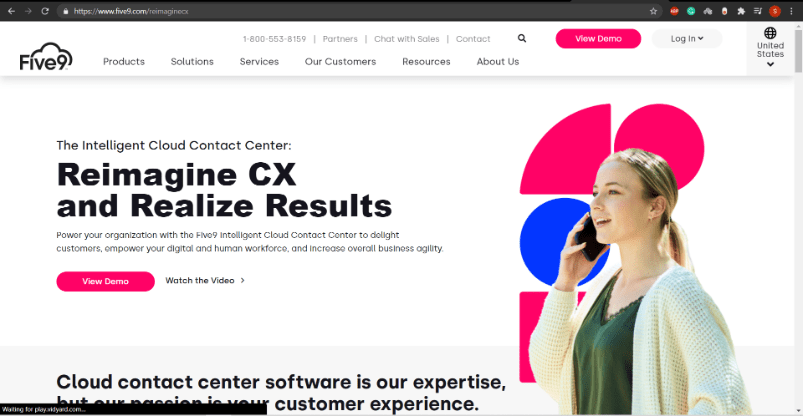
Five9 is an all-around intelligent cloud contact center software. It’s an advanced WFM software with digital workforce engagement capabilities.
The software solution provides employee performance analytics, call center process automation, and workforce optimization tools using AI technology.
Key features
- Monitor agent performance with multi-channel evaluations, real-time employee desktop monitoring, and automated scoring.
- Improve agent productivity by sharing KPIs and Service Level Agreement (SLA) statistics with them.
- Integrate this workforce management software with Salesforce, Zendesk, Oracle, and ServiceNow, with pre-built integrations.
- Create accurate multi-skill, multi-channel forecasts and employee schedules.
- Record a customer interaction and keep it safe in encrypted storage.
Pricing
Pricing is available on request.
Customer ratings
- G2: 3.9/5 (200+ reviews)
- Capterra: 4.2/5 (300+ reviews)
8. Calabrio
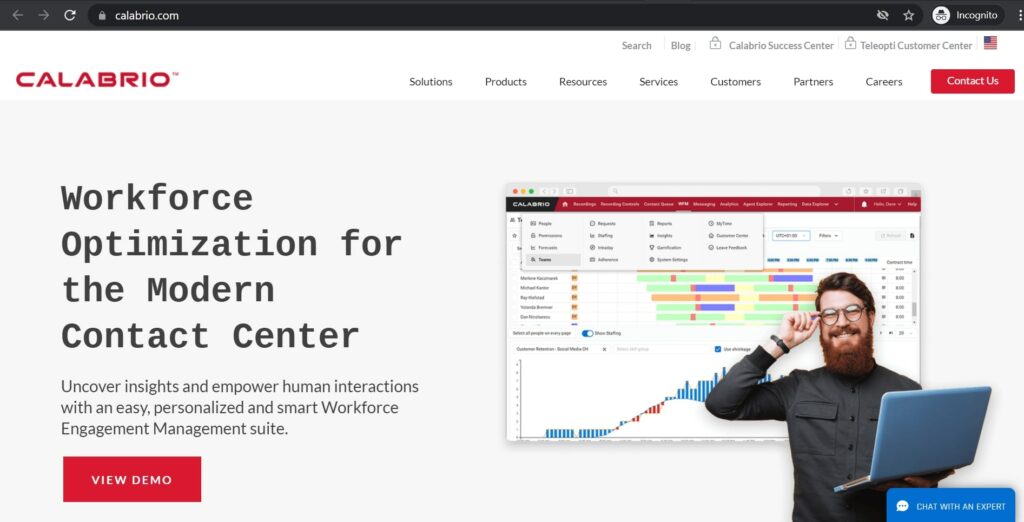
Calabrio is a call center and contact center workforce optimization software. It combines workforce optimization, call recording, quality management, and speech analytics solutions into one integrated suite.
Since Calabrio is a cloud-based workforce management solution, it’s suitable to manage remote agents.
Key features
- Predict spikes and lulls in your inbound call volume using historical data.
- Manage your breaks and overtime schedules with Grant, an AI-fueled chatbot.
- Respond to surges or lulls in call volumes with real-time intraday scheduling tools.
- Boost agent performance by motivating an employee with badges and scorecards.
- Customize and track the key metrics needed for a modern call center.
Pricing
Pricing is available on request.
Customer ratings
- G2: 4.3/5 (100+ reviews)
- Capterra: 4.3/5 (80+ reviews)
9. Verint Monet WFO
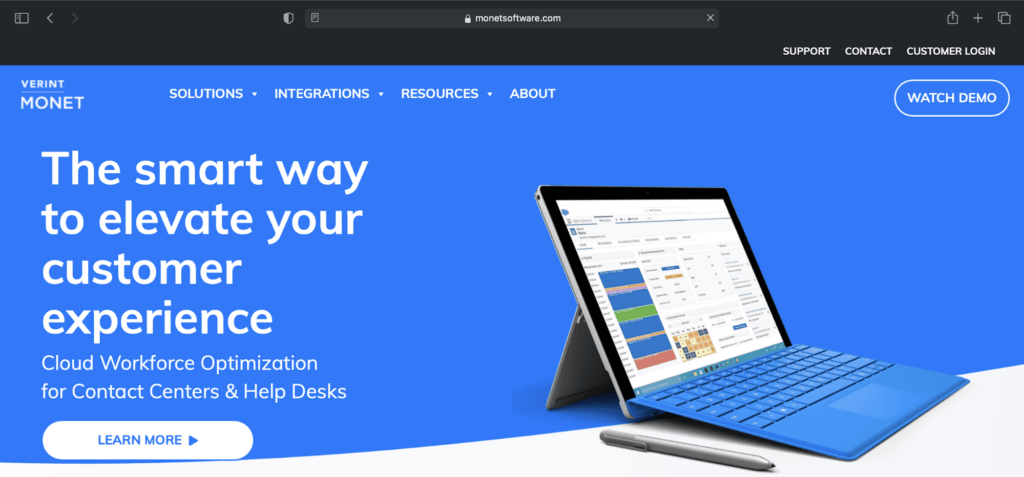
Verint Monet WFO is a cloud-based workforce optimization software solution that uses workflow automation to simplify workforce management tasks. These tasks can include forecasting, helping managers balance costs for operational efficiency, etc.
The Verint workforce optimization solution scales to accommodate any number of call center agents and is suitable for enterprises of all sizes.
Key features
- Automate your planning and forecasting, and optimize scheduling to align with agents’ workloads.
- Use speech analytics to uncover the root cause of why average handle times are too long and predict the customer satisfaction rating.
- Provides a unified communication platform that has all the information agents need to improve customer satisfaction.
- Get actionable insights into employee productivity metrics to compare your progress with your initial goals.
- Allow flexible agent schedules with mobile workforce optimization features, such as making schedule adjustments and setting automated approval rules.
Pricing
Pricing is available on request.
Customer ratings
- G2: 3.9/5 (20+ reviews)
- Capterra: 4.4/5 (10 reviews)
10. OpenText Qfiniti
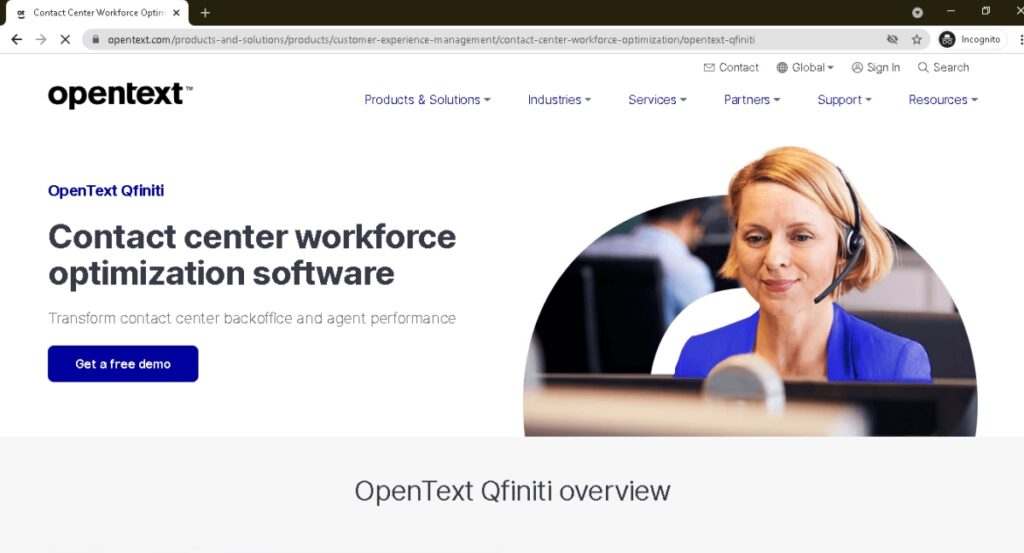
OpenText Qfiniti is a workforce optimization suite that offers real-time employee support and call center performance management capabilities.
Key features
- Use historical data from a date range, create a forecast for the same date range, and decide the appropriate staffing level.
- Upload customer interaction data directly from Microsoft Excel onto the OpenText Qfiniti software for forecasting.
- Develop industry-specific employee schedules for companies across different industries, including finance, insurance, technology, etc.
- Quickly assess the intraday performance report from OpenText for differences between forecast and reality.
- Access SLA data while forecasting, agent scheduling, and managing intraday activities on OpenText.
Pricing
Pricing is available on request.
Customer ratings
- G2: NA
- Capterra: NA
We’ve discussed the top workforce optimization software you can use.
Let’s now take a step back and look at what call center workforce optimization software is, its important features, and things you should consider before finalizing one.
What is call center workforce optimization software?
Call center Workforce Optimization (WFO) software uses critical employee engagement data and customer interaction analytics to improve your call center’s performance.
Enhancing customer satisfaction is a key measure of success for any call center. Issues such as a lack of quality monitoring, mismanagement of agents’ availability, and a lack of accountability can damage the customer experience.
A WFO software solution avoids these common workforce management errors with tools that help you accurately forecast your agents’ workloads, prepare effective schedules, and get agent engagement insights.
Call center managers typically use WFO software to monitor agents’ time, manage payroll costs, and improve productivity. On the other hand, call center agents use this software solution to self-schedule, access learning material, and submit time-off requests.
With that definition in mind, let’s now look at the five important features of WFO software.
5 key features of call center workforce optimization software
Here are the five key features of WFO software that benefit a call center.
- Agent availability: Assign physical resources and call center agents to a particular task based on their availability.
- Workforce scheduling: Make last-minute changes to the agents’ work schedules in situations like a sudden spike in demand or an unexpected fall in inbound call volume.
- Intraday management: Monitor a call center’s daily call volume along with daily agent schedules.
- Service Level Agreements: Ensure agents adhere to the necessary Service Level Agreements or SLAs (contractual obligations set by a call center client) while doing a task.
- Workload forecasting: Estimate your call center’s future demands using historical data and decide on staffing levels accordingly.
- Performance analysis: Monitor agent engagement and performance based on parameters such as the number of phone calls attended, phone call resolution time, and customer engagement.
- Cost tracking: Use time-tracking features to monitor employee productivity and billable hours.
Now that we’ve discussed the top ten WFO software, you may be wondering how you can narrow down your choices.
Don’t worry. We’ve got you covered in the next section.
2 things to consider before making your pick
Here are two things to consider when you’re finalizing WFO software:
1. Ease of use
It’s crucial to consider how easy or difficult your call center agents will find the software’s functionality.
Usually, it’s best not to pick a workforce management software with a steep learning curve.
Choosing a call center WFO software with a simple and intuitive user interface will empower agents and managers to use the software for operational efficiency.
2. Type of deployment
A call center can have different types of deployment.
The two major deployment types include:
- Cloud-based or virtual deployment
- On-premise or offline deployment.
Depending on whether your call center works online or offline, you can choose a more suitable call center WFO software.
For example, let’s say your call center is cloud-based and you’re looking for a suitable workforce management solution.
You’ll need a WFM solution with robust features that improve employee engagement within your remote team. This WFM software should also help your team access a unified communication platform with key information, adjust their schedules, and track their productivity online.
Final thoughts
Workforce optimization software can improve a call center’s performance management during high-pressure situations and even on normal days.
Managers can use WFO software to carry out complex call center processes like deciding staffing levels, improving agent engagement, monitoring customer engagement, etc.
Similarly, call center agents can use WFO software to edit schedules, track employee productivity, submit time-off requests, and more.
You can go through our list of the top ten call center workforce optimization software and choose the one that’s most suitable for your business.

Andy is a technology & marketing leader who has delivered award-winning and world-first experiences.


